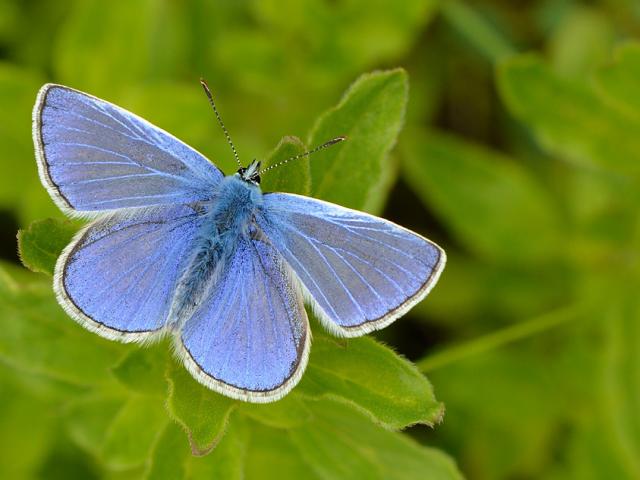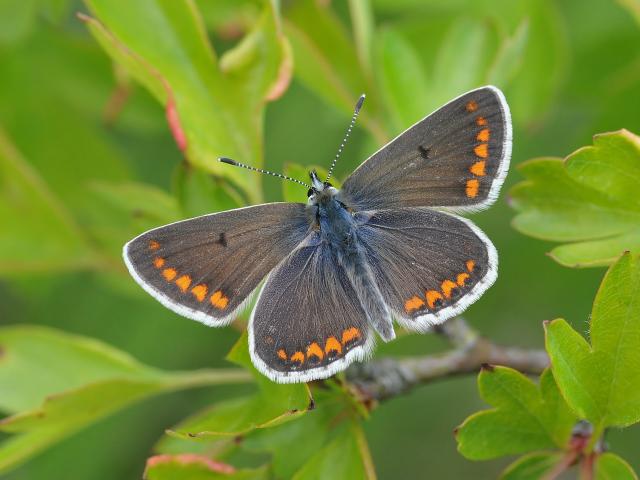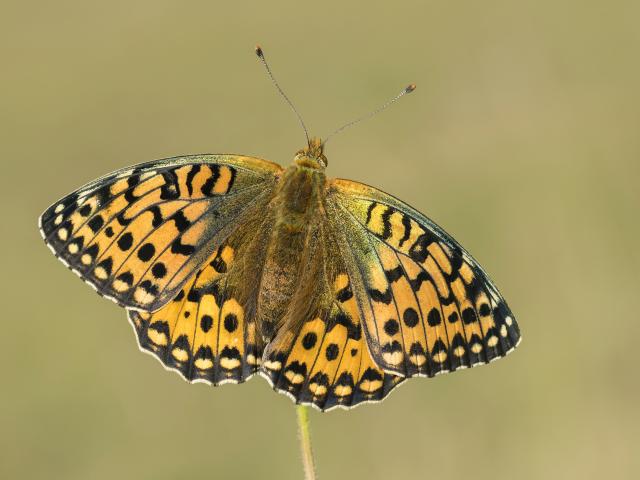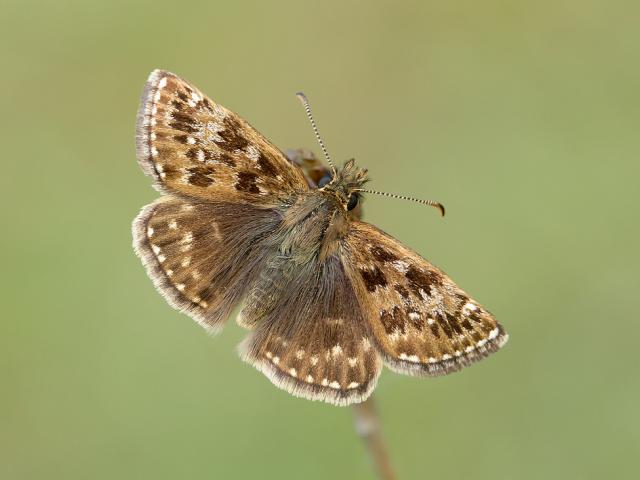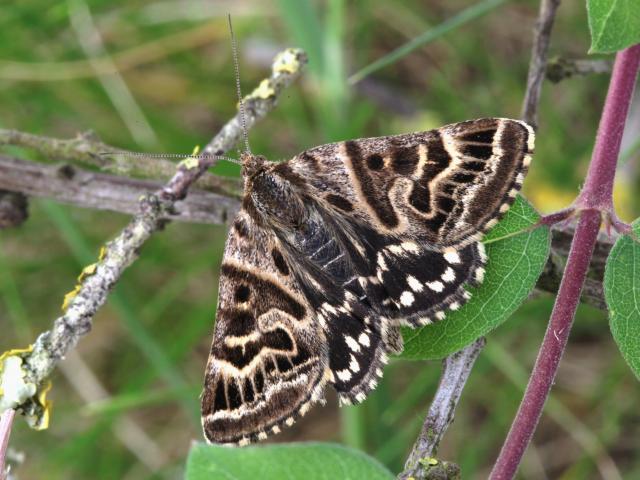Rough Bank is a Cotswold gem set in a secluded valley and a joy to visit throughout the year.
This flower-rich limestone grassland reserve is a wildlife haven boasting rare plants, butterflies and moths and is one of the few sites in the UK where it is possible to see six species of blue butterfly.
We also have records for hundreds of moths at Rough Bank, including a number of rare and nationally scarce species. You can take a virtual tour of Rough Banks and see species lists at http://www.gloucestershire-butterflies.org.uk/rbtour.html
Features
The reserve is biologically rich – the main area of flower-rich grassland is a Site of Special Scientific Interest (SSSI) and is home to 33 species of butterfly, 42 species of nationally scarce and rare moths and 12 species of orchid.
The Rough Bank sward is full of characteristic lime-loving plants such as Horseshoe Vetch, Autumn Gentian, Clustered Bellflower, Ploughman’s Spikenard and Rock Rose.
The impressive abundance of orchids includes Early Purple, Fly, Bee, Fragrant, Lesser Butterfly, Pyramidal and Autumn Lady’s Tresses.
The Rough Bank site was purchased by Butterfly Conservation in 2012 with the help of a significant grant from Natural England, funding from The Gloucestershire Naturalists Society and generous donations from many individual supporters. It has become part of the Cotswolds Commons and Beechwoods National Nature Reserve (NNR) and is managed in collaboration with Natural England and the National Trust.
Directions
There is no practical public transport.
The reserve entrance is at SO914 087 just south of The Camp – a small hamlet on the minor road called Calf Way which connects the B4070 (Birdlip to Stroud road) with Bisley.
Approaching from the north, continue through The Camp and along the Calf Way, past a left-hand fork just outside the Camp, the reserve entrance is about 170 metres further along on the right.
Approaching from the south along Calf Way from Bisley / Stroud towards The Camp, the reserve entrance is on the left a mile beyond the Greenshop (garage).
The nearest postcode is: GL6 7HN
Site access and safety
There is a small car park inside the reserve entrance - the traffic is fast along this road so please take great care when turning in and out and be aware of riders using the bridleway.
There is no safe roadside parking and the gateway should not be blocked when the car park is closed, as farm machinery needs access at all times. Please note that one gate is always unlocked, the chain and lock only secure the other gate.
On the designated Open Access land at the far end of the reserve, all dogs must be on fixed leads of no more than 2m in length whenever livestock are present and always between March 1 and July 31 because of nesting birds. Please do not allow your dog to disturb wildlife or other visitors. The field around the car park is not Open Access land – dogs must be kept under close control when using the bridleway and footpath that cross it, and on leads when grazing stock are present.
Most ticks are little more than an irritation, but a few can transmit Lyme disease, a rare and potentially serious illness which is treatable with antibiotics if diagnosed early. It is therefore important to be informed and take some simple precautions.
Download
pdf 1.46 MB

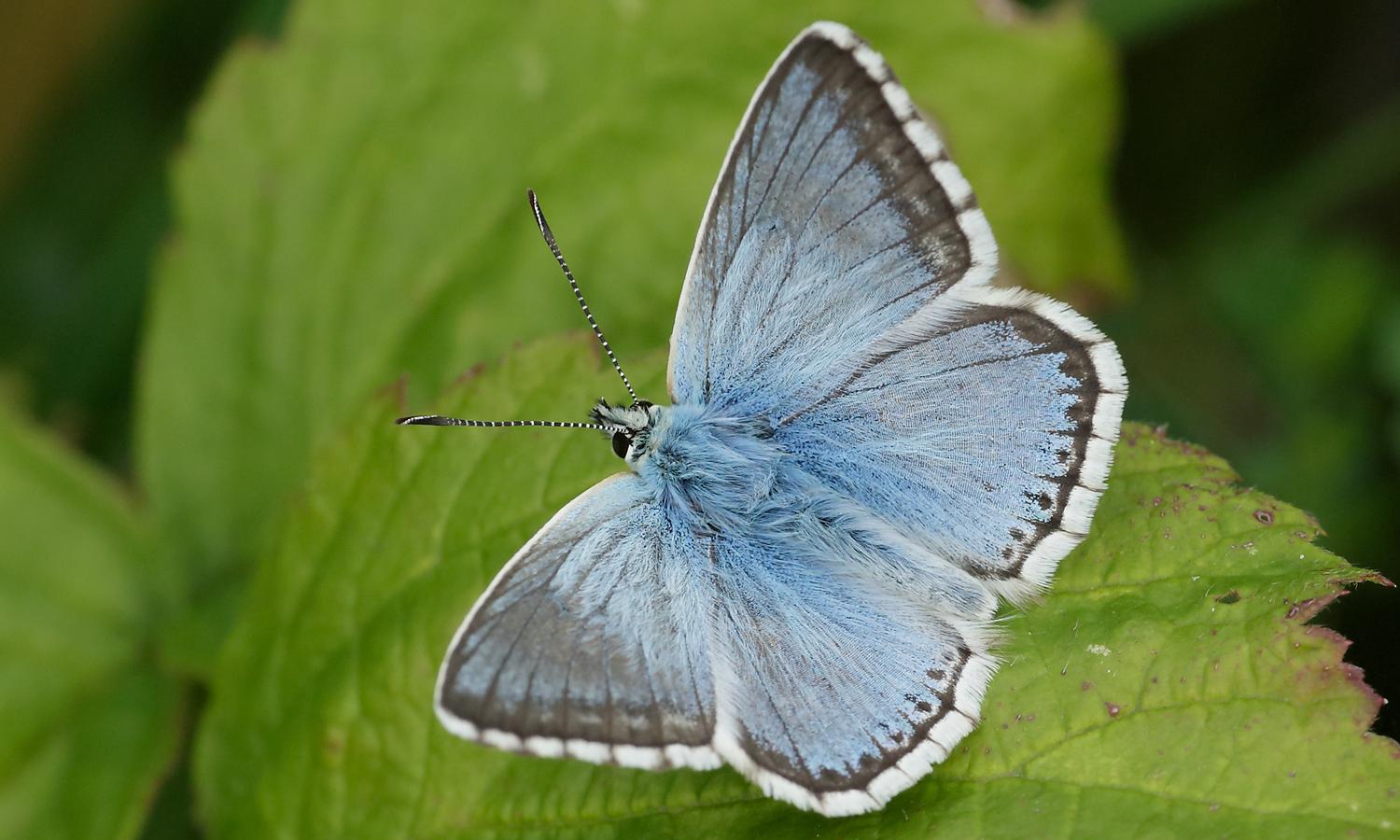
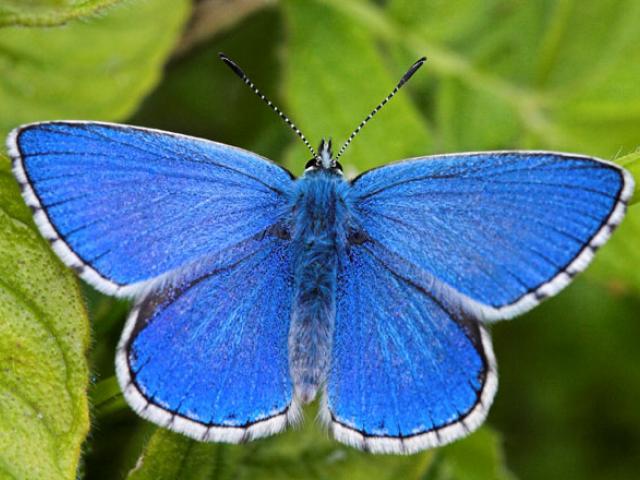
_iain%20leach%203-2.jpg)
